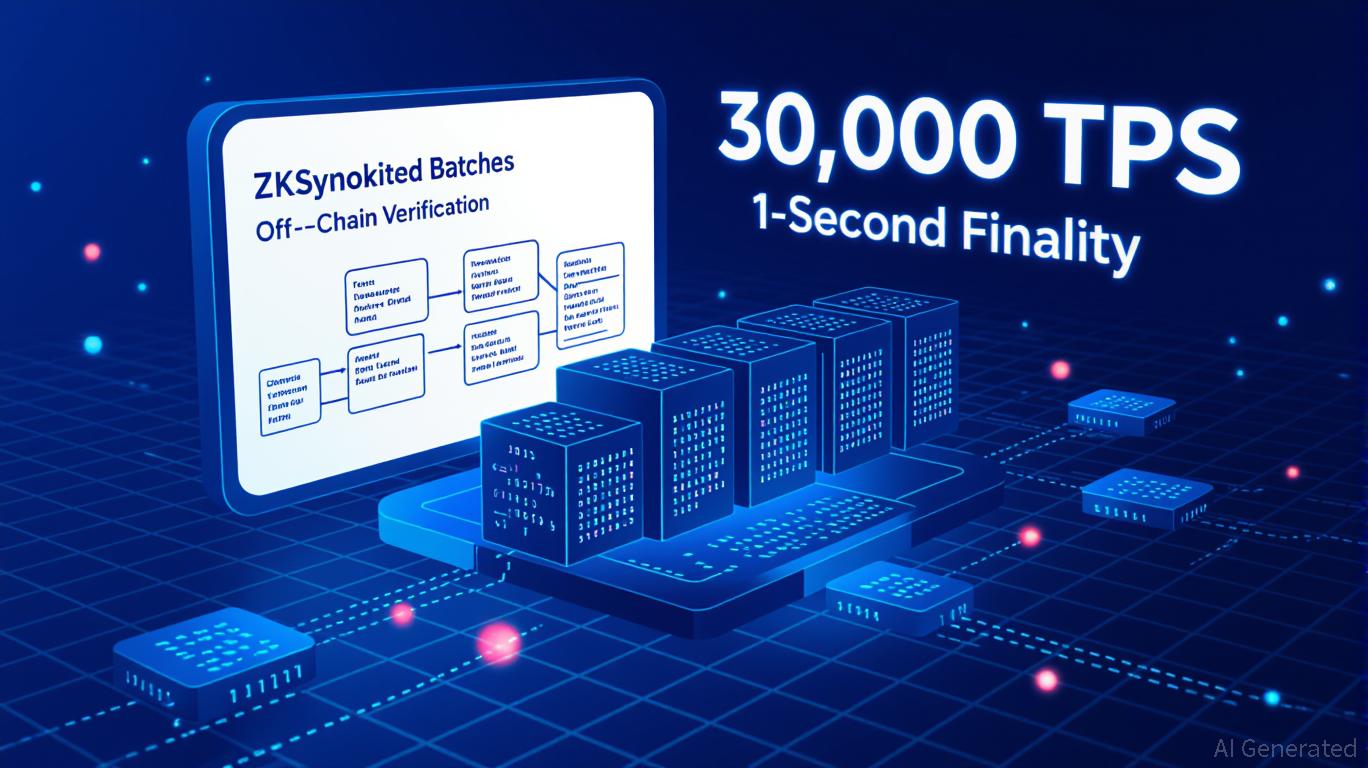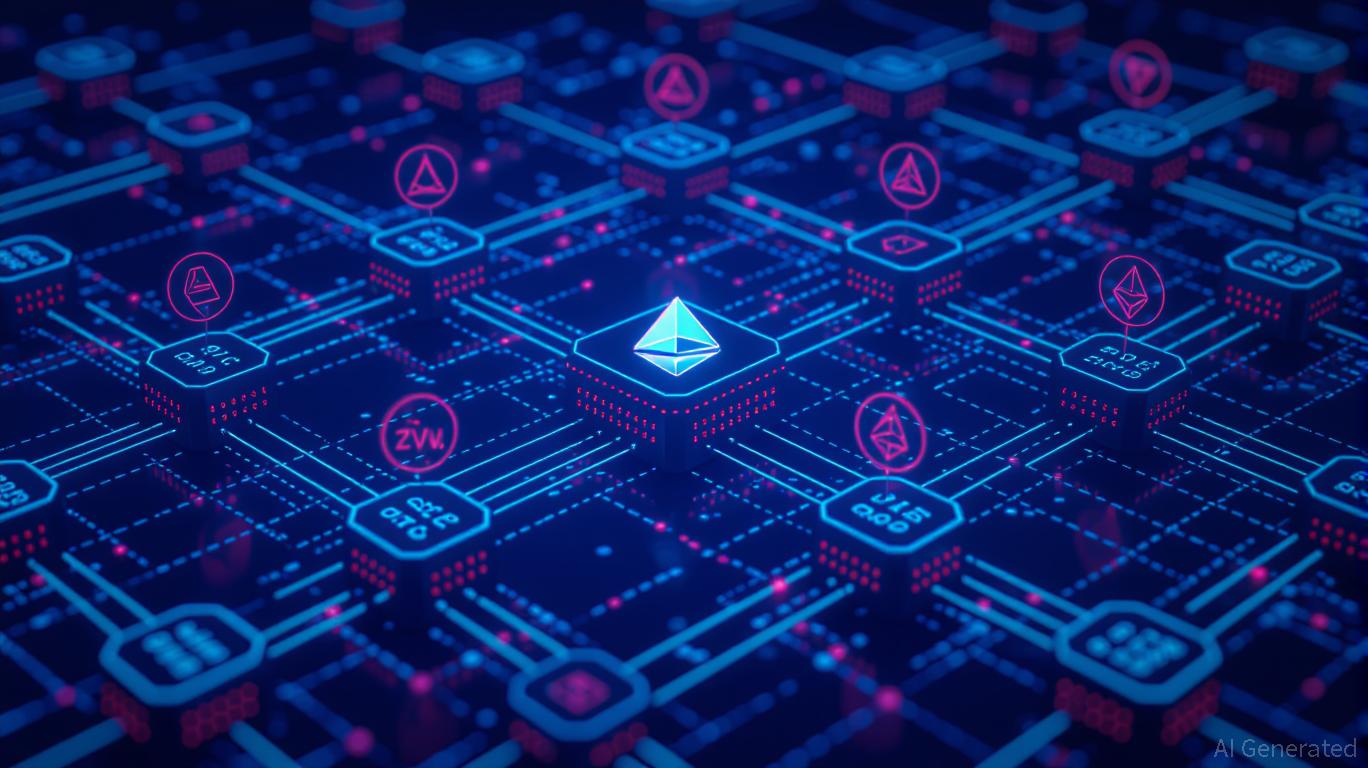ChainOpera AI Token Plunge: An Alert for Cryptocurrency Initiatives Powered by AI
- ChainOpera's COAl token collapsed from $20 to $1.50, exposing flawed risk management in AI-driven blockchain projects. - The crash mirrors C3.ai's 55.2% stock drop, highlighting governance risks and leadership instability in AI ventures. - Investors must demand technical alignment, transparent governance, and team expertise to avoid speculative pitfalls. - Regulatory frameworks like EU AI Act emphasize balancing innovation with accountability in high-risk crypto-AI projects.
ChainOpera’s Turbulence: Funding Frenzy, Speculation, and Concealed Dangers
ChainOpera’s COAl token initially captured the spotlight after securing $50 million in funding, including a $17 million seed investment in December 2024, as reported by a
With little transparency around governance and operational benchmarks, investors were left to gauge the project’s prospects solely through market activity. For example, while the $40 million funding round was hailed as evidence of ChainOpera’s promise, the undisclosed details—such as project valuation, allocation of funds, and token release schedules—cast doubt on its long-term viability. This lack of clarity is symptomatic of a wider pattern among AI blockchain projects, where technical jargon and aggressive marketing often mask significant risks.

Wider Implications: C3.ai and the Dangers of Poor Leadership and Execution
The fate of ChainOpera’s token echoes the struggles of AI-centric firms like C3.ai, whose shares dropped 55.2% in 2025 amid missed revenue goals, leadership turmoil, and a broader market downturn, according to a
Likewise, ChainOpera’s governance—described as “open to market interpretation”—left vital issues unresolved. Questions lingered about who steered the project’s direction, how AI was embedded in the blockchain’s core, and what controls were in place to prevent financial misuse. These lapses in oversight are not exclusive to ChainOpera but are indicative of broader challenges in the AI crypto sector, where raising capital often takes precedence over responsible management.
Investor Safeguards: Essential Due Diligence for AI Blockchain Projects
To steer clear of setbacks like ChainOpera’s, investors should implement comprehensive evaluation strategies for AI blockchain initiatives. Important factors include:
- Technical Relevance: Does the AI feature address a real need within the blockchain landscape, or is it merely decorative? For instance, AdEx’s AURA platform leverages AI to interpret on-chain activity for targeted Web3 advertising, as highlighted in a
Coiningape article.
- Scalability and Compatibility: Are the AI systems capable of operating effectively within blockchain limitations? Lightchain AI’s Proof of Intelligence and Artificial Intelligence Virtual Machine (AIVM) are cited as scalable approaches, according to a
BitPerfect article.
- Transparency and Governance: Are there established processes for making decisions, allocating resources, and managing risks? Frameworks like the NIST AI Risk Management Framework (AI RMF) and ISO/IEC 23894 offer models for sound governance, as discussed in a
Superblocks article.
- Team Competence: Do the project’s leaders and developers have demonstrated expertise in both AI and blockchain? Teams with diverse backgrounds and proven execution skills are more likely to deliver results.
Looking Ahead: Navigating Innovation with Prudence
ChainOpera’s downfall stands as a warning to both investors and builders. Although the fusion of AI and blockchain offers significant promise, it also requires a careful and methodical approach to risk evaluation. With regulations like the EU AI Act and other oversight measures becoming stricter for high-risk technologies, as noted in a
The takeaway for investors is unmistakable: excitement and capital inflows cannot replace thorough research. The volatility of the COAl token highlights why it’s vital to assess technical soundness, governance structures, and market fundamentals before investing. In a rapidly evolving sector, those who can separate genuine innovation from speculative buzz will be best positioned to avoid future losses.
Disclaimer: The content of this article solely reflects the author's opinion and does not represent the platform in any capacity. This article is not intended to serve as a reference for making investment decisions.
You may also like
Aster DEX’s Latest Protocol Enhancement and Liquidity Rewards: Advancing On-Chain Solutions and Optimizing DeFi Capital Utilization
- Aster DEX's 2025 protocol upgrade enables ASTER token holders to use their tokens as 80% margin collateral for leveraged trading, with a 5% fee discount for collateral users. - The upgrade triggered a 30% ASTER price surge and $2B 24-hour trading volume spike, attracting institutional attention including Coinbase's listing roadmap inclusion. - By converting ASTER into a functional collateral asset, the platform enhances capital efficiency while reducing liquidation risks through reduced margin requiremen

Vitalik Buterin's Progress in Zero-Knowledge Technology and the Investment Opportunities within Ethereum's Layer-2 Ecosystem
- Vitalik Buterin prioritizes ZK technologies to optimize Ethereum's post-Merge scalability, targeting modexp precompile replacement for 50% faster ZK-proof generation. - ZKsync's Atlas upgrade enables 15,000+ TPS and near-zero fees by redefining L1-L2 liquidity, positioning ZK-based L2s as Ethereum's infrastructure backbone. - Dencun's "blob" data slashes L2 costs by 98%, driving Base and Arbitrum to surpass Ethereum's base layer in transaction volume and user adoption. - ZK L2s like ZKsync and StarkNet s

Vitalik Buterin Supports ZKsync: What This Means for Layer 2 Scaling
- Vitalik Buterin endorses ZKsync, highlighting its ZK-rollup tech as critical for Ethereum's scalability and decentralization goals. - ZKsync's Atlas upgrade achieves 30,000 TPS with 1-second finality, enhancing programmability while maintaining on-chain security. - The project faces competition from Arbitrum and Optimism but differentiates through privacy, low fees, and Ethereum compatibility. - Rigorous audits and emergency response protocols strengthen ZKsync's security, though real-world performance r

ZK Atlas Enhancement: Driving Blockchain Expansion and Business Integration in 2025
- ZKsync's 2025 Atlas Upgrade introduces a high-performance ZK stack with 15,000+ TPS, redefining blockchain scalability through modular Layer 2/3 infrastructure. - The upgrade enables bridge-free Ethereum interoperability and supports EVM/RISC-V/WASM compatibility, addressing enterprise needs for hybrid blockchain solutions. - Institutional adoption surges with ZK token's 50% price jump and $19M+ partnerships, though legacy system integration and regulatory clarity remain key challenges. - BaaS compatibil
